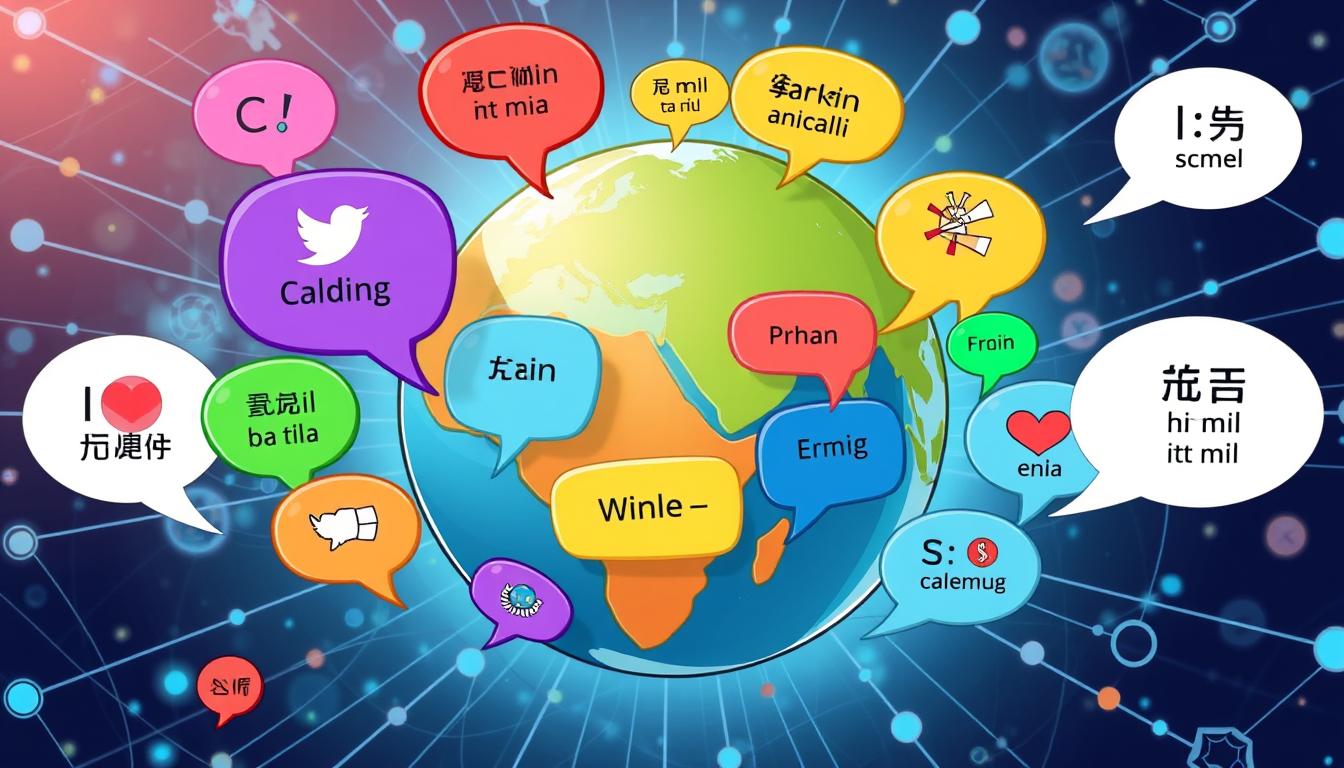Mastering Multilingual Prompting: Expand Your Reach
Are you missing out on customers who don’t speak your language? In today’s world, knowing multiple languages is key for businesses to grow globally.
Think about reaching 90% of European consumers in their own language. Or, imagine keeping 40% of website visitors from leaving because of language issues. These are chances to grab through cross-lingual prompting and multilingual models.
By using multilingual prompting, you’re not just translating. You’re opening doors to new markets, making user experiences better, and building trust across cultures. It’s about having a global presence that speaks to different audiences, leading to more sales and loyal customers.
Let’s see how you can use multilingual prompting to reach more customers worldwide. We’ll look at strategies for breaking language barriers and tapping into Africa’s linguistic diversity. This can change how you communicate globally.
Key Takeaways
- Multilingual prompting can prevent 40% of lost sales due to language barriers
- 90% of European consumers prefer browsing in their native language
- Multilingual websites enhance credibility and global presence
- Africa offers a vast pool of linguistic talent with over 2,000 languages
- Companies with greater cultural diversity outperform their peers
- Effective multilingual support leads to increased customer loyalty and revenue
- Leveraging linguistic diversity can provide a competitive edge in global markets
The Power of Multilingual Communication in Today’s Global Landscape
In our world connected by technology, speaking many languages is key. Only 16% of people speak English as their first language. This means businesses must find ways to talk to more people. Polyglot Language Models and Multilingual Natural Language Processing are changing how we connect with others from different cultures.
Breaking Language Barriers in Business
Companies using Speech AI to talk to people in many languages see their sales grow. This tech lets businesses reach out to huge markets like China and India. With models trained on data from over 100 languages, companies can talk to people all over the world.
Enhancing User Experience Across Cultures
Multilingual AI systems are making things better for users everywhere. They translate and speak with high accuracy, catching the subtleties of language. People love using these systems because they make talking to others from different cultures easy and effective.
Tapping into New Markets and Opportunities
Talking to people in many languages opens up new markets. Businesses using Speech AI are reaching more people and getting their brand known all over. This tech not only helps customers but also saves money by making marketing easier and cheaper.
As more money goes into Speech AI, we’ll see even more progress in Polyglot Language Models and Multilingual Natural Language Processing. This will help break down language barriers and open up new chances in our global world.
Understanding Multilingual Prompting
Multilingual prompting is changing the digital world. It creates content for people all over the world, in many languages and cultures. This is key for businesses wanting to grow and reach more customers globally.
Multilingual AI Assistants and Multilingual Chatbots lead this technology. They use smart algorithms to make and understand content in many languages. This helps break down language barriers.
- Cultural adaptation
- Brand voice consistency
- SEO considerations for target languages
- Appropriate translation methods
- Suitable site structures
Recent studies show the strength of multilingual prompting. A study looked at 6 tasks across 24 datasets in 49 languages. It found promising results for Multilingual Chatbots in many areas.
| Language | Native Speakers |
|---|---|
| Spanish | 100 million |
| Mandarin Chinese | 1 billion |
Businesses can train their Multilingual AI Assistants using data augmentation and transfer learning. This opens up new ways for global communication and connecting with customers.
Key Benefits of Implementing Multilingual Prompting
Multilingual prompting opens doors to global opportunities and enhances communication across cultures. It uses Language Agnostic Prompting and Cross-Language Transfer Learning to break down language barriers effectively.
Increased Global Reach and Audience Engagement
By using multilingual prompting, businesses can reach new markets and connect with more people. Studies show that bilingual skills are in high demand, especially in finance and healthcare. This way, companies can talk to customers in their own language, building stronger relationships and understanding.
Improved SEO and Online Visibility
Multilingual content boosts SEO efforts. It makes a business more visible in different regions, attracting a wider audience. For instance, Virginia’s move to offer high school equivalency exams in multiple languages has greatly improved accessibility and search rankings.
Enhanced Customer Trust and Loyalty
Providing content in users’ native languages builds trust and loyalty. Multilingual communication shows respect for cultural diversity and can lead to stronger customer relationships. This approach is especially beneficial in industries like tourism, international law, and diplomacy, where language skills are highly valued.
| Benefit | Impact |
|---|---|
| Cognitive Advantages | Enhanced conflict resolution and task-switching abilities |
| Economic Opportunities | Increased job prospects in global markets |
| Health Benefits | Delayed onset of cognitive decline in seniors |
Using multilingual prompting through Language Agnostic Prompting and Cross-Language Transfer Learning brings big advantages. It improves global reach, SEO performance, and customer relationships. This approach not only breaks down language barriers but also opens up new avenues for growth and engagement in the international marketplace.
Strategies for Effective Multilingual Prompting
Multilingual Transformer Models have changed how we communicate globally. Start by identifying your target languages and regions. This is key for creating a content strategy that connects with different cultures.
When using multilingual prompting, think about the variety of languages worldwide. With over 200 countries and 7,000 languages, picking the right translation method is crucial. You can choose human translation, machine translation, or a mix of both. Each option has its benefits, depending on your needs and resources.
User experience is essential in multilingual prompting. Make sure your layouts are responsive and include cultural elements to boost engagement. Use localized SEO to improve visibility in various regions. Also, keep an eye on translations and site performance to keep your strategy effective.
Using Multilingual Transformer Models can lead to great results. For example, cross-lingual prompting (CLP) has shown a 1.8% improvement in accuracy. By using task-specific solver prompting, you can reach top performance in cross-lingual chain-of-thought reasoning. This opens up new markets and opportunities.
Source Links
- Master WordPress Multilingual: Your Global Audience Guide
- Mastering Multilingual Customer Support in a Globalized World
- Mastering LLM Prompting Techniques
- Multilingual NLP: Breaking Language Barriers
- Speech AI: Revolutionizing Multilingual Communication
- The Importance Of Multilingual Communication In Todays Global Market – FasterCapital
- Addressing the Challenges in Multilingual Prompt Engineering
- Polyglot Prompt: Multilingual Multitask Prompt Training
- Tips to Write Effective LLM Prompts and Generate Multilingual Content
- Using Multilingual Approaches to Support English Language Acquisition
- Multilingual Learning: How To’s and Strategies for Teachers
- The Benefits of a Multilingual Education – EBI Blog
- Being Responsive to Multilingual Learners in Foundational Skills Instruction
- Here’s a Thing – Multi-Language Prompting







